Comics
Using comic strips to forecast the stock market
Frederick N. Goldsmith published a successful stock-market newsletter from 1916 to 1948, when he came under investigation by the New York Attorney General for telling his subscribers that his market advice was based on "inside information."Goldsmith, however, had an unusual defense. He revealed that the primary source of his inside information was the comic strip "Bringing Up Father." Goldsmith believed that the comic strip provided clues, in code, about the direction of the market. The clues had been placed there by "big insiders." This was apparently their way of communicating with each other. But Goldsmith believed he had cracked the code. Details from The Manipulators (1966) by Leslie Gould:
In one episode, explained Goldsmith, Jiggs was at the theater and remarked: "The intermissions are the only good thing about this show." Goldsmith interpreted that as a sure-fire tip to buy Mission Oil, which he passed on to his market letter subscribers. It went up fifteen points the next day.
When questioned, McManus (author of the comic-strip) insisted he knew nothing about the stock market and pointed out that he prepared his strip nine weeks ahead of publication. He also noted, "What would I be doing with cartoons if I were so hot on the stock market?"
Having learned the truth, the AG could have dropped the case, but he decided to shut down Goldsmith anyway for misleading his subscribers.

NY Daily News - Nov 18, 1948
The problem that the AG faced at the trial, however, was that Goldsmith's predictions had actually been pretty good and had served his subscribers well. In fact, many of his subscribers came to his defense during the trial. Nevertheless, the judge shut down Goldsmith's business. More details from The Manipulators:
The defendant. . . was engaged in the business of writing and distributing a market letter to the public which attempted to forecast and predict future prices of securities and commodities.
Subscribers were led to believe that the defendant used statistics, financial reports and charts in preparing. . . prognostications of future price movements. The letter was also so worded as to imply that the defendant had sources of special and secret information concerning stock movements. . .
The subscribers to the defendant's daily market letter had the right to assume that the defendant possessed a superior knowledge of the stock market, that whatever information he had came from living persons and recognized sources and not as a result of interpretations of comic strips. When he failed to inform his subscribers of the alleged sources of information he was concealing a material fact.

Terre Haute Tribune - June 13, 1948
Posted By: Alex - Mon Sep 05, 2022 -
Comments (0)
Category: Money, Comics, 1940s
The Case of the Missing Parliamentary Comics
Just a few days ago, Alex made a post involving the infamous Fredric Wertham. As an inveterate comics reader from way back, I long knew of Wertham's crusade to ban comics. But I did not realize that the UK had undergone the same crusade.Apparently, the offending material proved to be too attractive to remain on exhibit.
Source: The Charlotte Observer (Charlotte, North Carolina) 22 Apr 1955, Fri Page 1
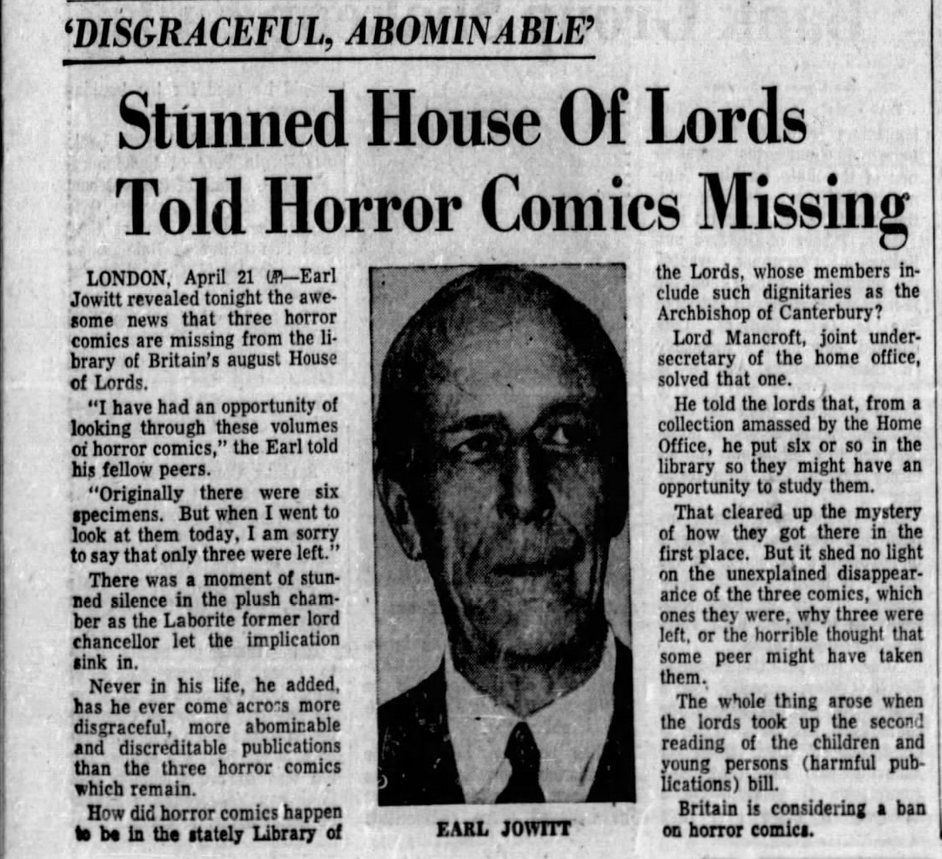
Posted By: Paul - Mon May 02, 2022 -
Comments (1)
Category: Government, Comics, 1950s
Hidden images in comic books
In Seduction of the Innocent, published in 1954, Fredric Wertham accused comic books of corrupting youth. One of the specific ways they did this, he alleged, was by concealing images of naked women in seemingly inoffensive panels. He helpfully reproduced one of these hidden images in his book.The image in question originally appeared in Jungle Comics #98, Feb 1948.



via Legends & Rumors
Posted By: Alex - Mon Apr 25, 2022 -
Comments (4)
Category: Censorship, Bluenoses, Taboos, Prohibitions and Other Cultural No-No’s, Comics
The Wonderland of Doo
The history of newspaper comic strips is replete with many oddities.An excellent blog on the topic, with almost daily posts, is STRIPPER'S GUIDE.
Here's one creation that has received very little attention, based on its scarcity of Google hits. Its creator was Arch Dale.
Each instance featured a big block of text, which I am omitting, save for one sample.
This survey is by no means complete, just a taste.
The strips were also collected in book form.
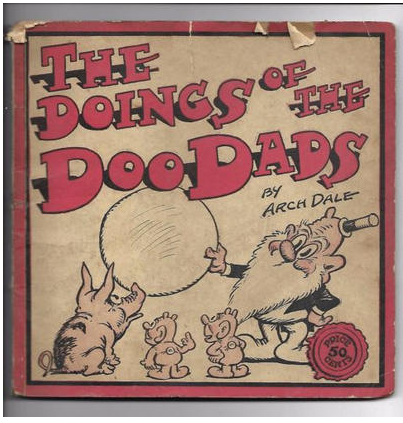
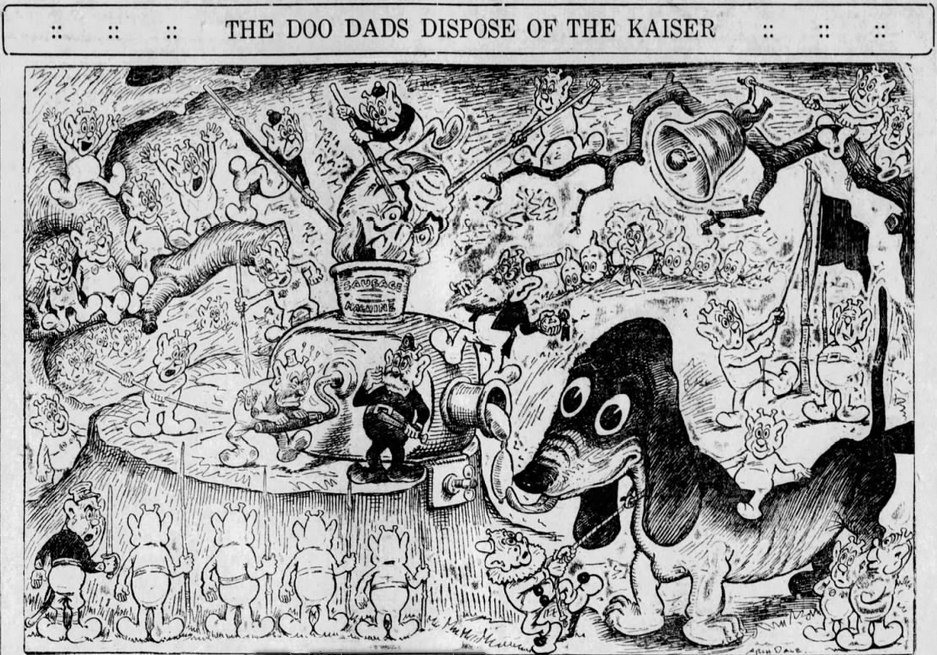
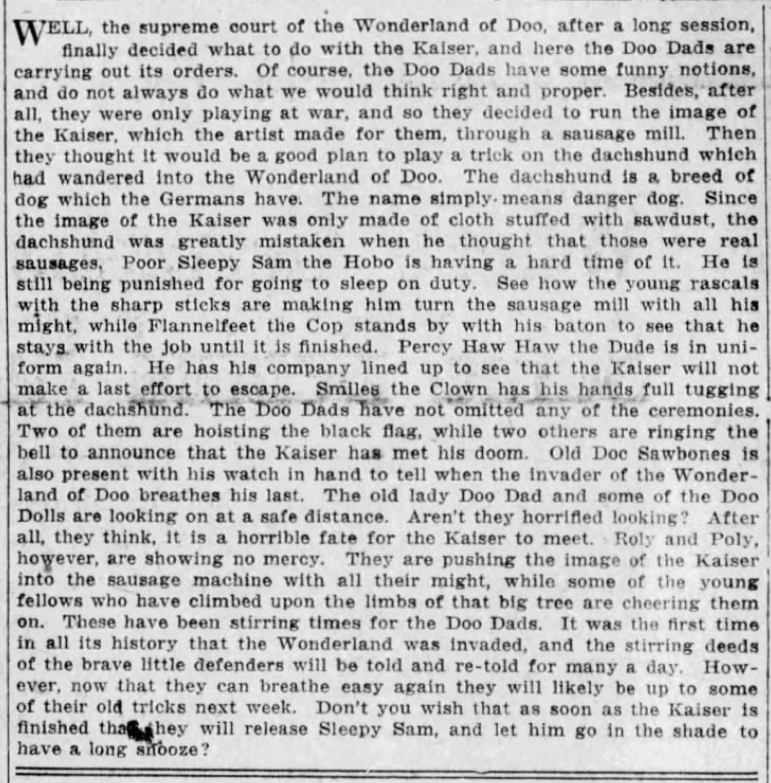
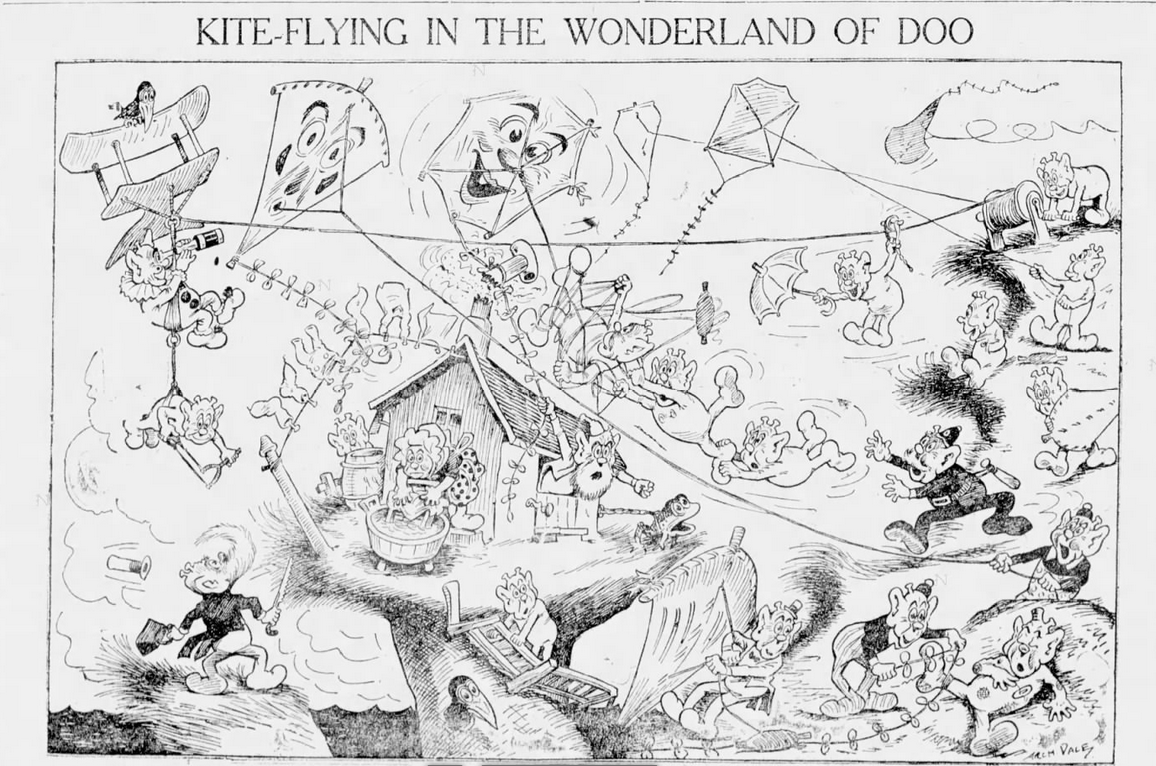
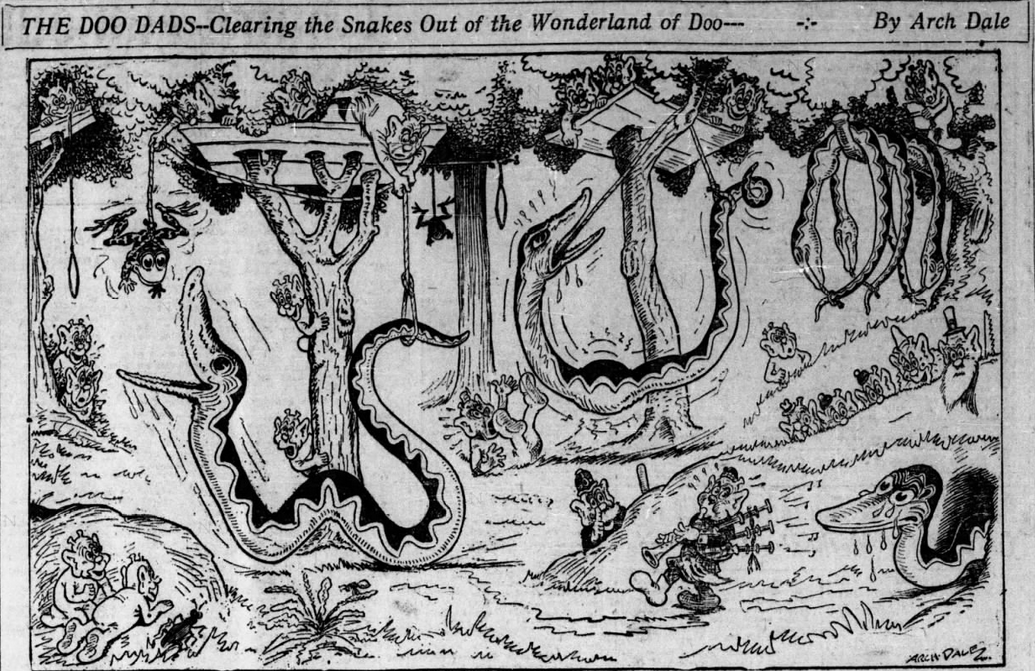
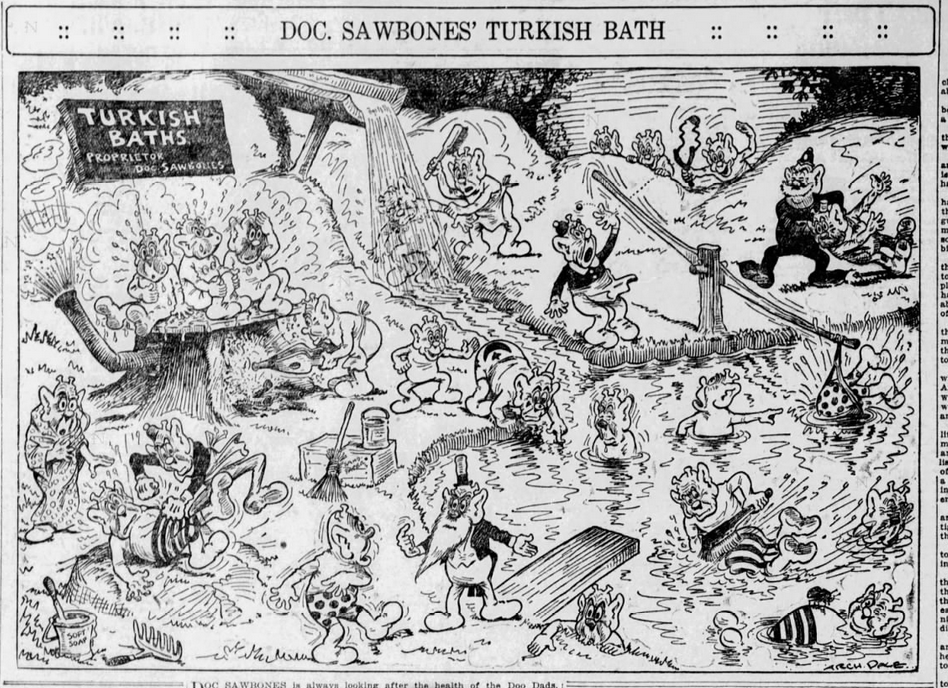
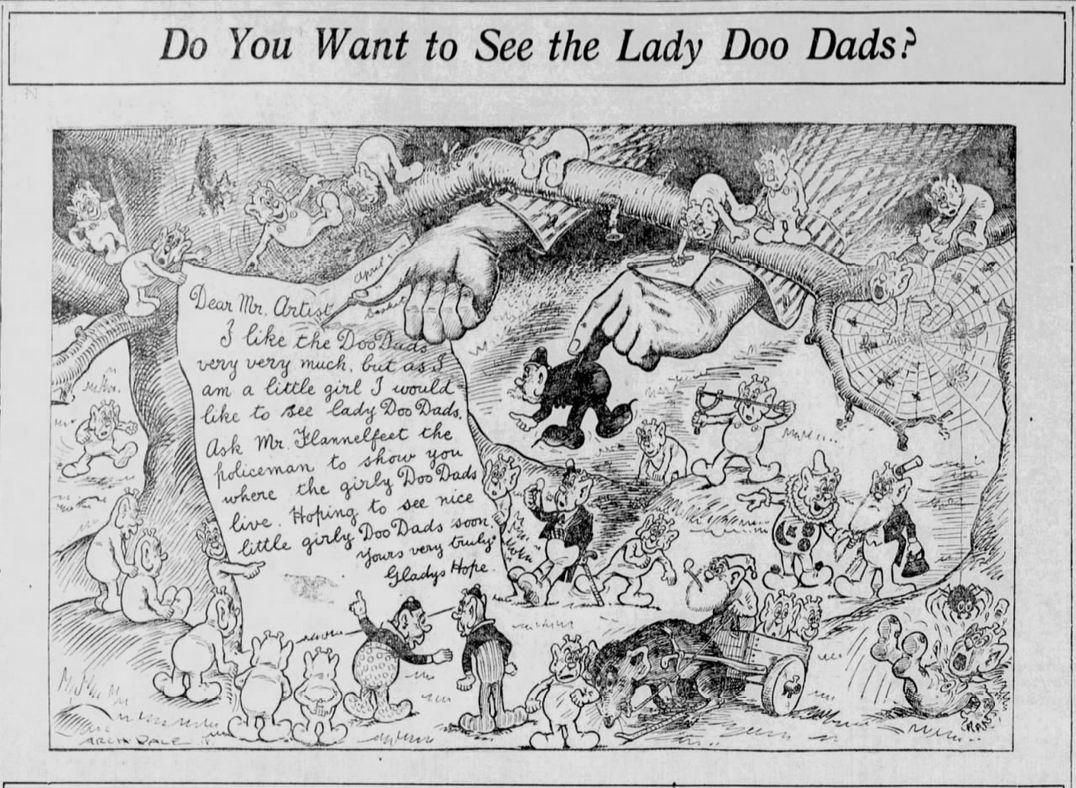
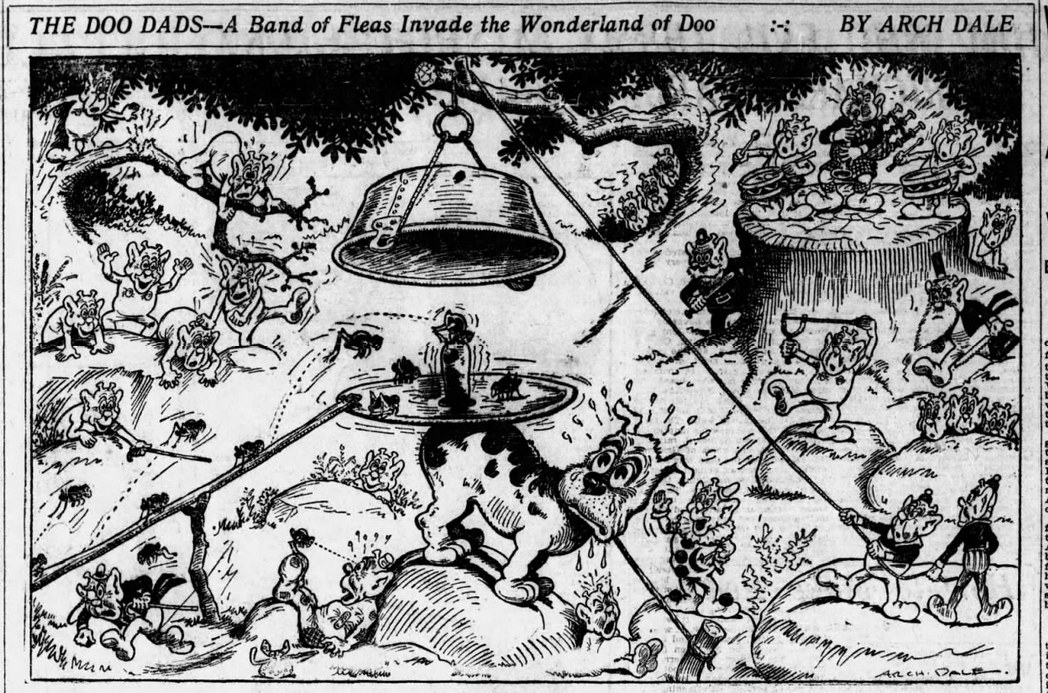
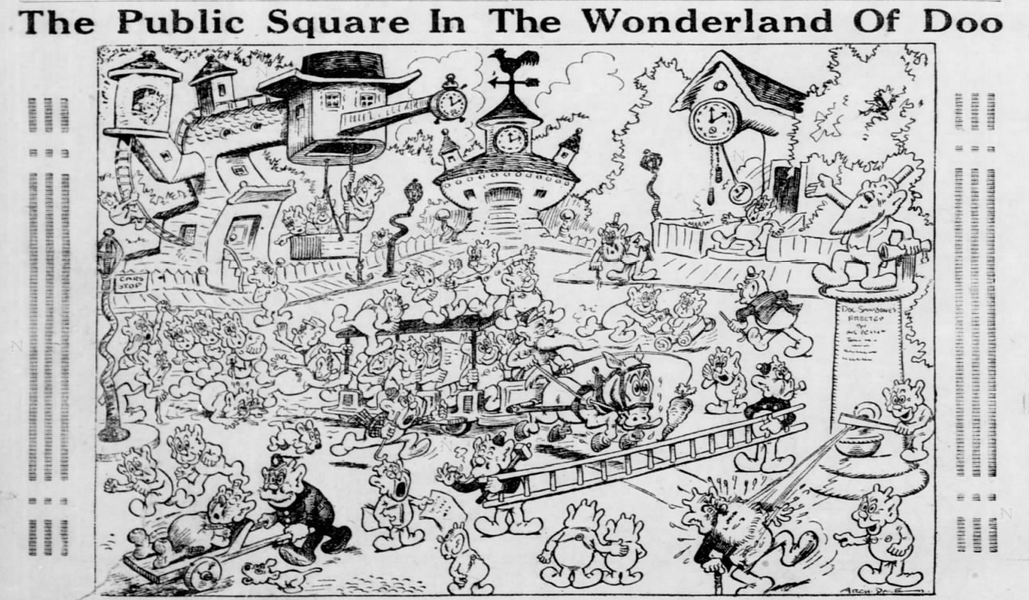
Posted By: Paul - Mon Mar 07, 2022 -
Comments (2)
Category: Anthropomorphism, Newspapers, Comics, Surrealism, Fantasy, Twentieth Century
Buster’s Joke on Papa
Posted By: Paul - Mon Feb 21, 2022 -
Comments (0)
Category: Animals, Movies, Oceans and Maritime Pursuits, Comics, 1900s, Pranks
Harvey Comics Rock
Posted By: Paul - Fri Jan 21, 2022 -
Comments (1)
Category: Ineptness, Crudity, Talentlessness, Kitsch, and Bad Art, Music, Comics, 1970s
Follies of the Madmen #523


Source (pages 10 and 11).
Posted By: Paul - Wed Jan 05, 2022 -
Comments (0)
Category: Aliens, Advertising, Comics, Cereal, 1950s
Moon Mice at the World’s Fair
Read it here.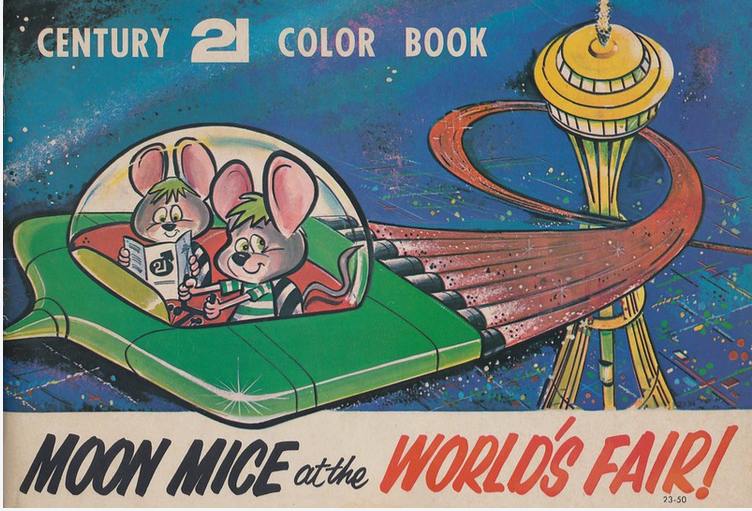
Posted By: Paul - Mon Dec 27, 2021 -
Comments (1)
Category: Anthropomorphism, Fairs, Amusement Parks, and Resorts, Comics, 1960s
The Adventures of Soberman
The Virginia Highway Safety Department published the Soberman comic book in 1979 as a way to encourage teenagers not to drink and drive. Copies of the comic were distributed to 70,000 driver education students.

As far as I can tell, the Soberman comic was a one-time publication. But in 2013 Soberman made an appearance in the flesh. He visited bars in Arlington, Virginia to spread his message of being responsible and having a designated driver when drinking.

Posted By: Alex - Tue Jun 29, 2021 -
Comments (2)
Category: Comics
Captain Sticky
By the age of 28, Richard Pesta had become independently wealthy thanks to a lucrative fiberglass and foam business. So he decided to fulfill his dream of being a superhero, and in 1973 he turned himself into Captain Sticky, "Supreme Commander in Chief of the World Organization Against Evil". The name referred to his fondness for peanut butter.He drove around Orange County in his Stickymobile looking for crime, outfitted with a peanut butter gun and "peanut butter grenades" made of peanut butter, vinegar and alka seltzer.
He also became a fixture at San Diego Comic Con, and was constantly trying to get Marvel to make a comic book about him, but this never happened.
Apparently his superhero act wasn't entirely just a way to get attention. He used his influence to advocate for various causes such as improving nursing homes and preventing rental-car ripoffs.
He died in 2003 at the age of 57.
More info: Heroes in the Night, News From Me, Real Life Superheroes Archive

Captain Sticky with Stan Lee at San Diego Comic Con, 1975
The video below is in German, but it has some good footage of Captain Sticky in action.
Posted By: Alex - Tue May 25, 2021 -
Comments (2)
Category: Comics, 1970s, Courage, Bravery, Heroism and Valor

| Who We Are |
|---|
| Alex Boese Alex is the creator and curator of the Museum of Hoaxes. He's also the author of various weird, non-fiction, science-themed books such as Elephants on Acid and Psychedelic Apes. Paul Di Filippo Paul has been paid to put weird ideas into fictional form for over thirty years, in his career as a noted science fiction writer. He has recently begun blogging on many curious topics with three fellow writers at The Inferior 4+1. Contact Us |




